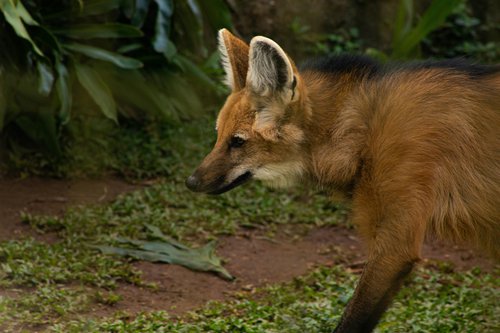What made you want to work with EO and forests?
“I am from the Cerrado, a biome located in the Central-West region of Brazil, which is a tropical savanna and one of five biomes in Brazil. When I was a child, I lived in an area with very few people. There was vegetation everywhere, and my siblings and I would play with all the animals, which we loved. Then, over the years, the streams started to dry up, the vegetation was cut down so more people could move in, and the agro-business grew. When I was 15, I started to see everything changing. I wanted to study and understand this change and contribute to preventing habitat loss, this inspired me to study Biology. However, I quickly experienced the difficulty of observing large-scale change. This led me to discover Geographical Information Systems (GIS), then remote sensing, where I could see everything from above and apply my knowledge in Biology to EO. The motivation was always to contribute… and I love forests!”
What are you favourite Brazilian animals?
"My favorite is the Lobo-guará (Maned Wolf). While it is primarily vegetarian, it also eats other animals and fruits, particularly a plant known as Fruta-de-lobo or Lobeira, which translates as 'wolf fruit.' This fruit makes up 50% of its diet. When I lived in Brazil, my siblings and I played with the wolves, and tatu-bola (Brazilian three banded armadillo). Sadly, they are now both under threat of extinction.”

Lobo-guará
What is a highlight of your EO career?
“A highlight in my career is the first time I left Brazil to do my Post Doc in Italy with the European Space Agency (ESA). The project used radar datasets to map biomass in Tapajos National Forest in the Amazon. It involved integrating Synthetic Aperture Radar (SAR) and topographic variables like slope and elevation. I remember this time fondly as it opened a lot of doors for me to go abroad and advance my research. I learnt a lot from the ESA, which allowed me to go to the University of Leicester. There, I spent four years mapping forests in Brazil, Indonesia, Colombia, and Mexico. During my time in Italy, I also met my now-husband!"
What do you enjoy most about EO
“For me, it's the beauty of EO images and the fascinating patterns and evolutions of ecological processes they reveal. My favorite moments are when I see a forest recovering. I like the ability EO gives us to find solutions and propose resolutions to policy makers. EO can be used as a tool to inform policy, especially in the face of climate change. I also love being in the forest and validating my remote observations."
What would you like to see the GISMEO community achieve?
"I hope to see community members connecting and collaborating, developing research proposals and courses, and finding ways to support students. There is great potential for broader use of spatial technologies across the University, and this community is ideally positioned to enhance visibility and expand adoption. It's an exciting time for the community"
Fun fact
"I used to perform aerial silk, similar to circus acts, and even gave a few presentations on it, including some in Rome! Unfortunately, I had to stop after injuring my knee while dancing at a conference's closing event."

